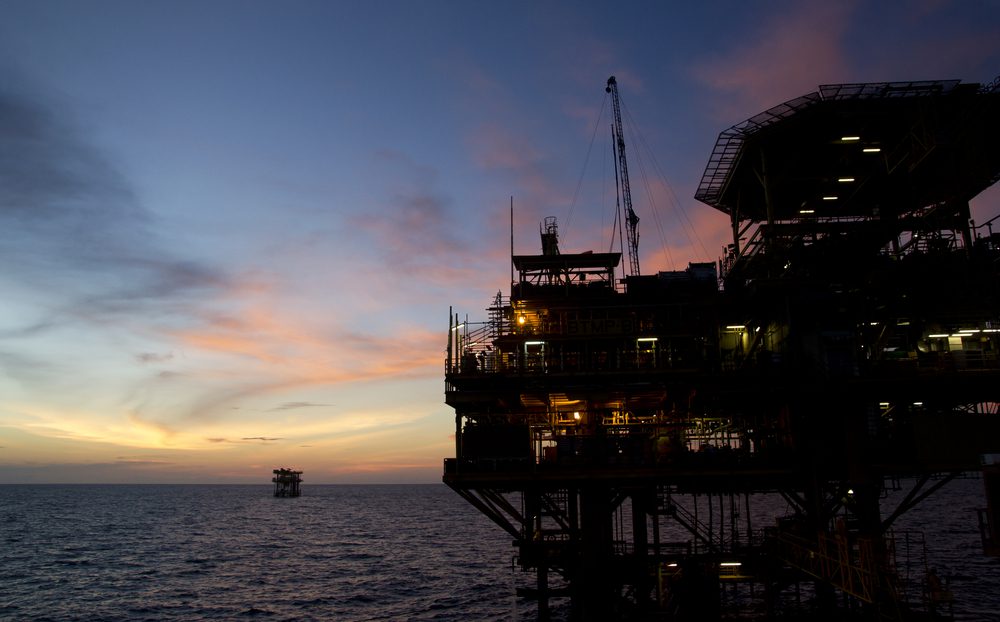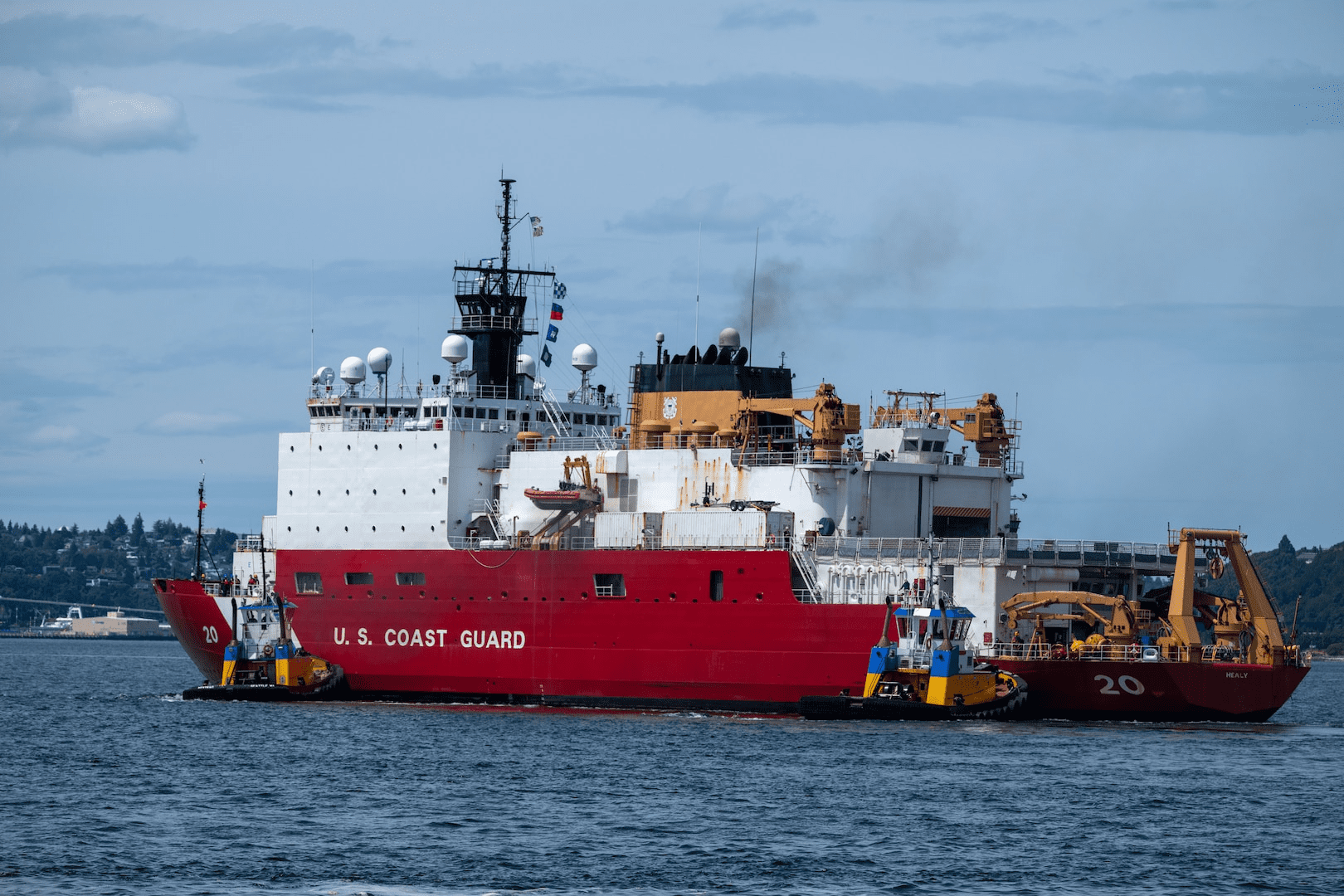Coast Guard personnel aboard the Cutter Sycamore set a DESMI “Polar Bear” skimmer into the Arctic Ocean. U.S. Coast Guard photo by Petty Officer 2nd Class Kelly Parker.
The US Coast Guard recently issued a press release commending participants on the success of last week’s oil spill recovery equipment exercise off the coast of Barrow, Alaska. The three-day joint operation was the first of its kind to be held in the Arctic Ocean and the Coast Guard chose the location for the exercise due to its extremely remote location and limited infrastructure.
Challenging indeed, but is the USCG doing enough?
The official purpose of this exercise was to “evaluate the suitability of new equipment for use in Arctic waters and to help the Coast Guard and Department of Defense understand the logistical complexities of operating successfully in remote areas of the Arctic“.
Considering aggressive plans by Shell and others to drill in the region, despite delays, unseasonably thick ice, groundings, poor local charts, vocal anti-drilling activists and various weather concerns, an extraordinary amount of planning and preparation is needed.
Lt. Cmdr. Michael Sarnowski, Commanding Officer Coast Guard Cutter Sycamore comments, “This has been an outstanding opportunity to evaluate our capabilities and see how critical our coordination with federal, state, local and tribal partners will be for success in event of an actual incident.”
We reached out to the US Coast Guard’s Chief of Media Relations, CDR Christopher O’Neil, with a few questions:
Are there any plans in place to deal with an arctic spill occurring in the winter? For example, what if the sea floor develops a Frade-type fissure and starts leaking oil during the middle of the winter?
First, understand that spill response plans and area contingency plans apply at all times and responsible agencies stand ready to implement those plans. As we have said before, any spill in the Arctic will be challenging because of Arctic conditions and the lack of infrastructure, pre-staged response equipment and communication capabilities. It is also important to note that the potential for a spill that you have described is not new in light of previous Arctic drilling.
That said, sea ice coverage is near 100 percent offshore during the winter…detecting any unintentional seepage would be extremely difficult since the ice would block it’s view.
If Shell obtains the necessary approvals to begin drilling operations, BSEE will maintain an inspector presence aboard the drilling rigs. BSEE Inspectors would witness temporary or permanent plugging operations to ensure they are completed in compliance with federal regulations and meet all of the safety requirements.
What deepwater drills has the USCG conducted in the 2+ years since the Gulf Oil Spill to mitigate damage from future offshore drilling rig blowouts?
The mitigation of damage stemming from any oil spill is a shared responsibility between industry, the Coast Guard, BSEE and other state, local and federal agencies with responsibilities in oil spill response. Since the Deepwater Horizon incident, the Coast Guard has strengthened our national and regional partnerships with the Bureau of Safety & Environmental Enforcement. BSEE regularly conducts unannounced exercises with offshore plan holders.
The Coast Guard has increased its levels of participation in BSEE-led exercises. Coast Guard Federal On-Scene Coordinators actively participate in BSEE unannounced exercises on the West and Gulf Coasts. The Coast Guard has participated in:
- Chukchi Sea Spill Management Team Table Top Exercises (TTX): Shell TTX was held on May 24, 2012. The FOSC and staff from Sector Anchorage participated in the exercise and D17 simultaneously exercised its incident management team.
- Additional exercises are scheduled with government and private sector entities.
- A Notification exercise was or will be a component of each TTX described above.
Additionally, The Coast Guard, in collaboration with federal, state, and local response agencies developed the International Offshore Drilling Response Plan (IODRP), which is an addition to the Area Contingency Plan (ACP) and describes how operations would be conducted for a deepwater oil spill in the offshore environment. This plan was developed from potential risk of an uncontrolled foreign source deepwater oil spill.
Coast Guard led exercises include:
- IODRP Workshop: Conducted on Nov 11, 2011 to review, test, and validate the general concepts of the IODRP (Coast Guard-led exercise)
- National Preparedness for Response Exercise Program (NPREP) TTX: Tested the Florida Keys Area Contingency Plan (ACP) on Apr 12, 2012 based on a worst case discharge scenario from an offshore oil drilling platform located in a foreign EEZ.
Was there any industry participation in the exercise?
Yes. The Coast Guard conducts annual Oil and Hazardous Substance Response exercises with the Area Committees. These Area response exercises are to exercise the entire response community in all facets between government and industry for spill response through the National Preparedness for Response Exercise Program.
One of the most incredible things that occurred during the Gulf Oil Spill was the standup of a Joint Command Center the proved quite effective in managing the multitude of operations that were occurring during the spill. What sort of plans have been put in place to prepare for a quick standup of a similar Command Center in Alaska?
The CG stands ready to activate a Unified Command incident command post in the event of an oil pollution event associated with Shell offshore drilling. The activation of this command post was tested with all response partners in Anchorage, AK on 24 May 2012.
Since the Deepwater Horizon BP oil spill, the Coast Guard reviewed, revised and promulgated the National Incident Command (NIC) Commandant’s Instruction, which more clearly defined the functions and staffs that would support a National Incident Commander in a spill of national significance, and designated specific offices to ensure they have trained and qualified personnel identified to fill key positions on the NIC staff.

 Join The Club
Join The Club



![Is The USCG Ready for an Arctic Oil Spill? [INTERVIEW]](https://gcaptain.com/wp-content/uploads/2012/08/120802-G-GW487-005-Polar-Bear-skimmer.jpeg)







